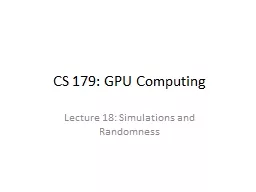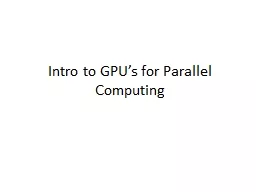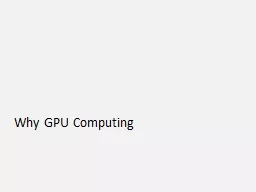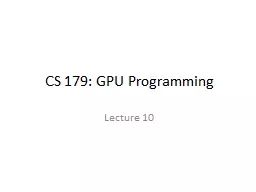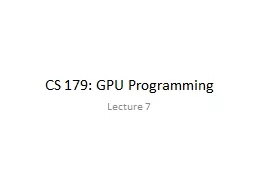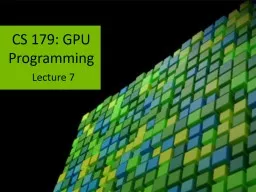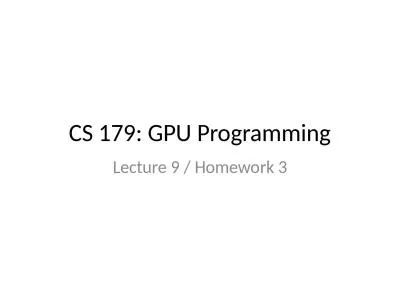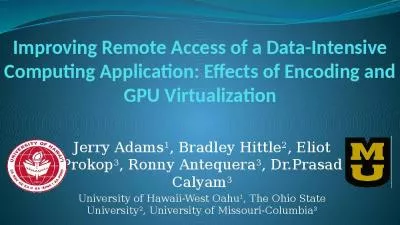PPT-CS 179: GPU Computing
Author : debby-jeon | Published Date : 2019-11-08
CS 179 GPU Computing Lecture 18 Simulations and Randomness Simulations South Bay Simulations httpwwwpanixcombrosengraphicsiacc400jpg Flysurfer Kiteboarding httpwwwflysurfercomwpcontentblogsdir3filesgalleryresearchanddevelopmentzwischenablage07jpg
Presentation Embed Code
Download Presentation
Download Presentation The PPT/PDF document "CS 179: GPU Computing" is the property of its rightful owner. Permission is granted to download and print the materials on this website for personal, non-commercial use only, and to display it on your personal computer provided you do not modify the materials and that you retain all copyright notices contained in the materials. By downloading content from our website, you accept the terms of this agreement.
CS 179: GPU Computing: Transcript
Download Rules Of Document
"CS 179: GPU Computing"The content belongs to its owner. You may download and print it for personal use, without modification, and keep all copyright notices. By downloading, you agree to these terms.
Related Documents

